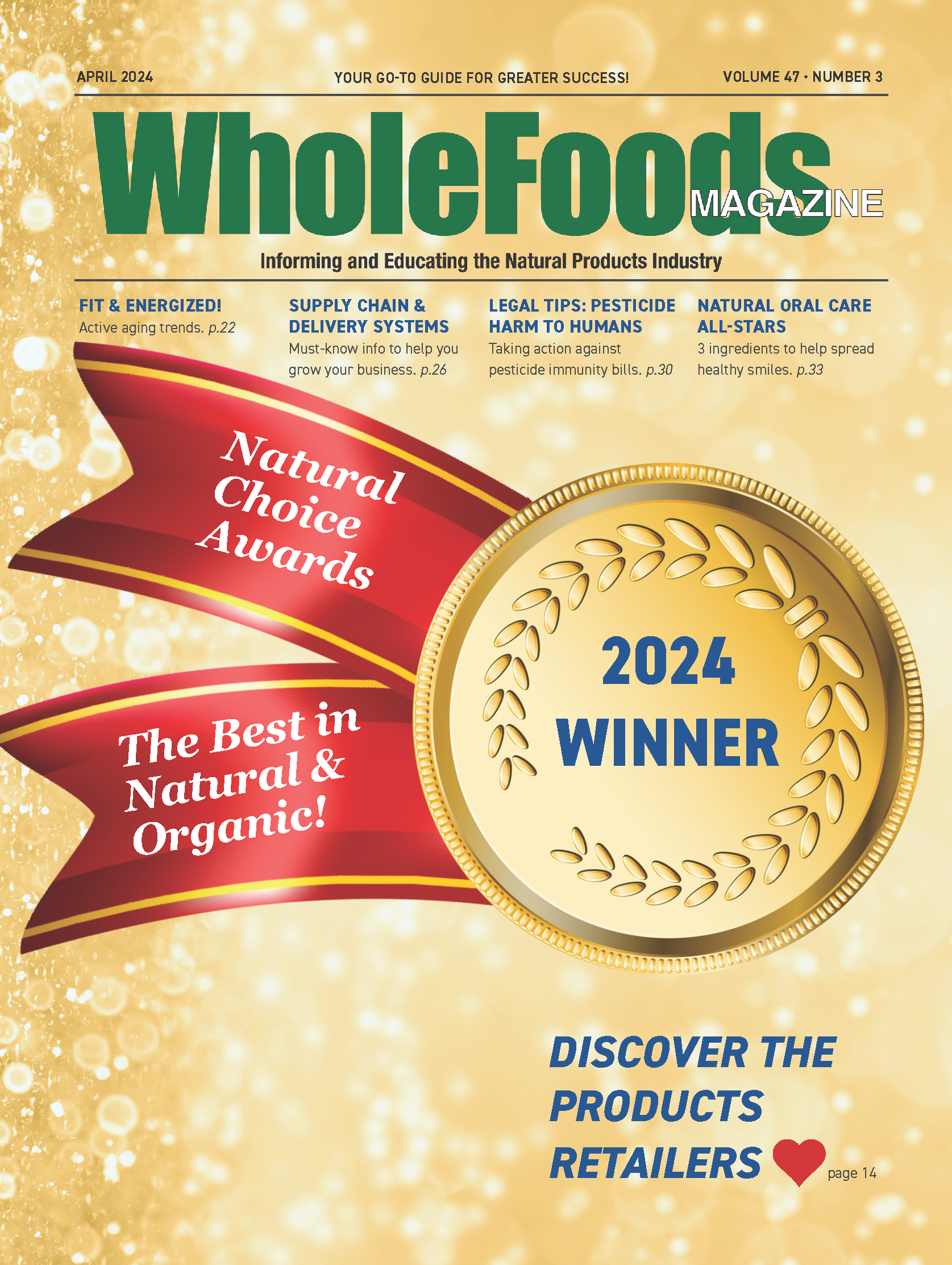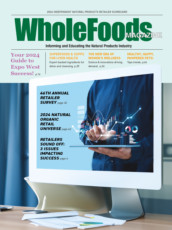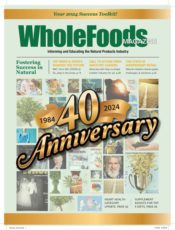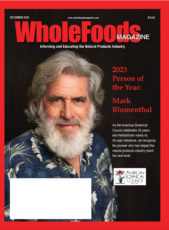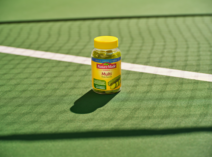In the same way that deadly aspartame is being secretly slipped into all kinds of foods and drinks that we eat, plans have been hatched to disguise genetically engineered food ingredients under the label “Biofortified.” After all, consumers are catching on to the deadly health consequences of the increasingly fake foods they eat, so the corporate monsters behind aspartame and GE ingredients are stooping to subterfuge. Like crocodiles, they lay their eggs in hidden terrain.
Immaculate ConceptionIt all started out innocently enough several Codex Nutrition committee meetings ago when an international nongovernmental organization (INGO) named the International Food Policy Research Institute (IFPRI) (and sponsored by Harvest Plus1) had one of its country contacts introduce a proposed new work at Codex. (Only member countries may introduce new work at Codex, not INGOs.) Harvest Plus’ method of increasing certain vitamin and mineral content of basic food crops consists of the time-honored, conventional way of cross-breeding, not genetic engineering. Harvest Plus, for example, will increase the vitamin or iron content of sweet potatoes so that malnourished populations in developing nations will receive better nutrition.
The new work at the Codex Alimentarius Commission’s Codex Committee on Nutrition and Foods for Special Dietary Uses (CCNFSDU) was simple: Craft a definition for Biofortification. That definition could then be used uniformly around the World to apply to those foods conventionally fortified with higher levels of nutrients and everyone would be on the same page whenever the term “biofortified” was used. Indeed, the National Health Federation (NHF), the organization of which I have been president for 11 years, was an early supporter at Codex of this definition.
Poisoned in the WombThis year’s CCNFSDU meeting — hosted by the German Health Ministry in Berlin, Germany, the first full week of December 2017 — witnessed a lively debate about not only how to define Biofortification but also whether or not the very word “Biofortification” should be used at all. However, this was not the beginning of the debate.
At the 2016 CCNFSDU meeting, the Chairwoman Pia Noble (married to a former Bayer executive) had started off the Biofortification-definition discussion by giving her incorrect personal opinion that the definition should be as broad as possible and that recombinant technology should be included. Her statement, though, directly contradicted Australia’s admission at the 2015 meeting that if the Committee were to refer to the original 2012 document on the scope of Biofortification, we would see that Biofortification only refers to conventional breeding and so we should clearly exclude GM techniques. At last year’s CCNFSDU meeting, however, Australia was silent on the issue.
In other words, the original mandate for creating the Biofortification definition was that it was to be defined as a process by which the nutritional quality of food crops is improved through conventional plant breeding with the aim of making the nutrients bioavailable after digestion. Not surprisingly, though, soon enough, the Monsanto minions worked on the definition through influence peddling with Codex delegates and the Chairwoman, and the definition began changing into one that would include genetically modified “biofortified” foods. So, the battle is on at Codex as to whether or not GM foods will be included within the definition of Biofortification. I am sure that Monsanto would be thrilled to be able to market its synthetic products under a name that began with the word “Bio.”
So, by the 2017 meeting, the proposed Biofortification definition had morphed into the following, which includes genetically engineered foods: “Biofortification is the process whereby any nutrients or related substances of all potential source organisms (e.g. animal, plant, fungi, yeasts, bacteria)[of]/[and] foods are increased by a measurable level [and/or] become more bioavailable for the intended purposes. The process applies to any method of production [and excludes conventional fortification]. [footnotes excluded]”2
Deceptive Marketing Par ExcellenceThe EU raised a valid objection that the very name “Biofortification” would cause confusion in many European countries due to the widespread use of the word “bio” as synonymous with “organic.” Other countries within the EU have been very vocal and support the EU’s position here, arguing that the definition needs to be restrictive, not broad. Once again, the NHF agreed with the EU position here. The term “Biofortification,” at least within European countries, risks consumer confusion as to whether they are purchasing organic products or something else entirely. This kind of market confusion cannot be allowed. We have used fortified products such as cereal and milk without any additional descriptor. Monsanto seeks to cash in on the organic market with the loaded word “bio.”
Biofortification — Part of a Broader PushMonsanto’s herbicide glyphosate, a worldwide bestseller, was up against a wall earlier this year. The European permit for its sale was set to expire in December 2017. Blind as a bat, and despite massive consumer protests, the EU Commission suggested that the permit be renewed for an additional 15 years, a proposal that was unsurprisingly supported by both the European Food Safety Authority (EFSA) and the German Federal Institute for Risk Assessment (BfR). BfR’s most influential scientific advisor, for example, is Dr. Georg F. Backhaus, head of the Julius Kühn Institute, who last year gave an introductory speech at a scientific colloquium lauding genetic crop improvement technologies.3 Influence-peddling is rife amongst these “scientific” bodies.
Curiously enough, some of the EU’s text in its permit-renewal proposal was reportedly extracted word-for-word from the so-called “Glyphosate Task Force,” a Monsanto lobby group. Equally curious was that EFSA’s assessment of scientific studies excluded all independent studies (some 106 studies in all) as failing to meet EFSA “standards.” So, EFSA has zero problem basing its advice on secret industry studies that cannot be independently verified; but, as the International Monsanto Tribunal puts it, when “it comes down to Monsanto ‘proving’ that glyphosate is safe … all studies that say otherwise are ‘not scientific.’”4
In early November, the EU was divided in its support and opposition to the glyphosate permit renewal; but Germany broke the deadlock by supporting a five-year extension that was steadfastly opposed by Belgium, France, Italy, Austria, Malta, Greece, and Croatia, amongst others.5 Germany does not have a great history of protecting European citizens’ interests, as shown once again here.
The furor over the decision to renew the glyphosate permit for an additional five years was such that over 1.3 million Europeans have signed a citizens’ initiative asking for a total glyphosate ban. Sadly, though, neither EFSA nor BfR seem to realize that their already suspect credibility has been seriously eroded by this incident, perhaps beyond repair. Above all, this permit-renewal fiasco reveals that most government agencies that are supposed to protect the public are really nothing more than regional field offices for Monsanto and other industry players. Far from protecting the public, these governmental agencies have betrayed the public trust and should be thoroughly cleaned out or even disbanded. Otherwise, they are simply part of the broader push to poison us and the rest of our Planet.
The Chairwoman Violates Codex ProcedureDr. Noble, the CCNFSDU Chairwoman, actually should be spoken of in the past tense since she reigned over her last CCNFSDU meeting this December 2017 in Berlin. She is retiring now and not a moment too soon. Following a typical pattern of ignoring INGOs such as NHF, not to mention the Codex Procedural Manual itself,6 Her Imperial Highness would allow the country delegates to rattle on for literally hours, letting them make whatever comments they wanted to make and that had popped into their heads, 20 or more times, on an issue without ever calling even once upon the patiently waiting INGOs. This resulted in the INGOs not being heard at all or only briefly and oftentimes after the timeliness of the issue had long since passed and been decided upon!
When I confronted Her Majesty about this at the meeting, she demurred, saying that she had to call on all of the countries first; but the truth was that even during lags in the discussion when she could have called upon an INGO who was waiting to speak, she would deliberately wait until a country pushed a button and then promptly call upon that country instead, ignoring the INGOs who were still waiting to speak.
When finally forced to call upon the INGOs due to my angry denunciation of her tactics at the head table, she prefaced it all with a flimsy lie of blaming “technical problems with the microphones.” This lie was so blatantly false that it hardly deserved refutation.
So, When We Finally Got to Speak …The morning after the main debate about the Biofortification definition, the Chairwoman finally began calling upon the INGOs to speak on this issue, starting with NHF. What follows are my words to some 300 delegates in the room:
“Yesterday, NHF was not given the timely opportunity to speak on this important topic, so I appreciate that we can at last finally speak now. In the future, I would suggest that more value can be gained from the INGOs’ unique consumer and industry perspectives if their verbal comments are heard at the same time as the specific issues discussed rather than waiting to the very end of an Agenda item and even then only to be heard if time permits. IPFRI, e.g., could have offered us much insight on this issue and we would have liked to have heard IPFRI speak. We ourselves had to wait 2 hours and 20 minutes, all flagged up, and never got to speak.
“Having said that, on this issue of the wording for the Biofortification issue, let me first say that NHF has nothing but the utmost respect for IPFRI and its sponsor. These are good people — trying to do good things.
“But we do have concerns. Although NHF was an early supporter of Biofortification, we have since come to see that the Biofortification concept is in the process of being hijacked and being converted from something good into something bad.
“If Codex is to allow ‘any method of production’ and ‘any source’ to be part of the Biofortification definition, then Codex will be engaging in marketing deception of the worst sort.
“Most consumers want GM foods labeled. Consumer polls across the world have shown this to be true. In the United States alone, some 90% of consumers want such labeling and yet here, this proposed definition will seek to disguise GM foods under the term ‘Biofortification.’ “That is dishonest, it is disgraceful, and for all of those sincerely concerned with the credibility and transparency of Codex, you should absolutely and positively oppose this definition.
So, the National Health Federation is opposed to adding in the following wording: (1) ‘all potential source organisms’ (2) ‘The process applies to any method of production’ and (3) Footnote 4 (‘Method of production should be determined by National/regional authority’)
“On the last wording, NHF feels that letting the National Authorities determine whether GM foods are included within the definition is simply a backdoor way to include GM foods within the Biofortification definition.
“I thought we were trying to harmonize the standard here. It makes much more sense for us to have a solid, non-misleading definition or else, as the Russian Federation has said, have no definition at all.
“And for the reasons already expressed by the European Union, we have a problem with the term itself as the word ‘bio’ is almost universally recognized as being synonymous with ‘organic.’
“We also note in passing that it is a very sad state of affairs where we have come to the point in our history where we must manipulate our natural foods to provide better nutrition all because we have engaged in very poor agricultural practices that have seen a 50% decline in the vitamins and minerals in our foods over the last 50 years. NHF mentioned this problem back at the 2005 CCNFSDU meeting.
“Regardless of where we find ourselves now, however, we will not remedy poor nutrition by engaging in deceptive marketing practices and sleight of hand with this definition. NHF urges this Committee to have a clear and non-misleading definition as was originally envisioned at the 2015 meeting, where the Australian delegation correctly stated that the original 2012 document on the scope of Biofortification excluded GM techniques.”
In the end, after all of the INGOs had finally been able to speak, including NHF and IFPRI, the latter conceded that it would probably not be successful in holding onto the “Biofortification” name for its products and proposed alternatives such as “agro-fortification” and “nutria-fortification.” The Chairwoman, though, brought the discussion to a quick halt and it is left for her successor to untangle this mess at next year’s meeting in Berlin.
But That Was Not AllFollow-up Formula (FUF) for young children, a Nutrient Reference Value (NRV) for EPA and DHA (eicosapentaenoic acid and docosahexaenoic acid, respectively), Ready-To-Use Therapeutic Foods (RUTFs), and Trans-Fatty Acid claims were four other agenda items discussed at the Berlin meeting, sometimes with passion. But, after the contentious 2016 committee meeting, the discussion on Follow-up Formula was mostly wordsmithing. Both sides seemed content – the formula manufacturers because the FUF standard was still progressing, which when adopted will give international legitimacy to this product, and the infant-formula consumer groups because CCNFSDU will include a reference to WHO’s recommendations for strict controls on the marketing and labeling of formulas for babies over six months.
Ironically, the proposed Codex standard for Ready-To-Use Therapeutic Foods allowed glucose syrup to be used as a sweetener but forbade the use of corn syrup, until I pointed out that these were practically identical sweeteners and very dangerous GMO-derived ones at that. A change was made.7
On the Trans-Fatty-Acid claims and the proposed NRV for EPA and DHA, the Codex Nutrition Committee postponed any action until the next meeting, but not before both Malaysia and NHF could lambast Canada and those others who so ignorantly continue to buy into the long-discredited myth that saturated fats have any connection with heart disease.8
In ShortHeavy-handed tactics on the part of the outgoing Chairwoman resulted in an unnecessarily prolonged discussion about the Biofortification definition, which itself has been hijacked by Monsanto and others to disguise within its consumer-friendly name something very ugly and deceptive. Monsanto’s attempt was recognized by many delegates for what it was and denounced in the meeting. The fight, however, will carry over to next year’s meeting to be held in Berlin in November 2018. And that meeting will be chaired by the Committee’s new chairwoman, Ms. Marie-Luise Trebes.ST
Endnotes1. See www.harvestplus.org. 2. Report Of The Thirty-Ninth Session Of The Codex Committee On Nutrition And Foods For Special Dietary Uses Berlin, Germany, held December 4-8, 2017. The approximately 300 participants on Government, Observer, and UN delegations are listed in Appendix 1, on pages 19-48. A further 60 or so people (including Danone’s Policy and Intelligence Manager from its Global Affairs Unit) wore public badges and do not appear on the list. 3. Agricultural Biotechnology Scientific Colloquium, sponsored by JKI, and held in Quedlinburg, Germany from 22-24 June 2016; see http://www.grace-fp7.eu/sites/default/files/Scientific%20Colloquium%20final4.pdf. 4. Foundation Monsanto Tribunal website, accessed on December 21, 2017, at http://en.monsantotribunal.org/main.php?name=main&obj_id =384283593. 5. Caterina Tani, “German Vote Swings EU Decision on 5-Year Glyphosate Renewal,” EU Observer, Nov 27, 2017, at https://euobserver.com/environment/140042. 6. Codex Procedural Manual, 24th Edition, Section III, pp. 99-105. See also ibid, Section I, Rule IX, par. 3, at p. 15. It has traditionally been the practice at Codex meetings to allow the countries to all speak first once and then the INGOs once and then back to the countries again for second comments, and so on. Her Imperial Highness routinely violated these rules with impunity, making her unfit for the position. 7. Report, supra, at p.14, para. 117, last bullet point. 8. Dehghan M, Mente A, Zhang X, et al., “Associations of fats and carbohydrate intake with cardiovascular disease and mortality in 18 countries from five continents (PURE): a prospective cohort study,” Health Sciences and Medicine, Aga Khan University, Karachi, Pakistan, PGIMER, Aug 29, 2017, at http://dx.doi.org/10.1016/S0140-6736(17)32252-3.
A graduate of the University of California at Berkeley Law School, Scott C. Tips currently
 practices internationally, emphasizing Food-and-Drug law, business law and business litigation, trade practice, and international corporate formation and management. He has been involved in the nutrition field for more than three decades and may be reached at (415) 244-1813 or by e-mail at scott@rivieramail.com.
practices internationally, emphasizing Food-and-Drug law, business law and business litigation, trade practice, and international corporate formation and management. He has been involved in the nutrition field for more than three decades and may be reached at (415) 244-1813 or by e-mail at scott@rivieramail.com.


